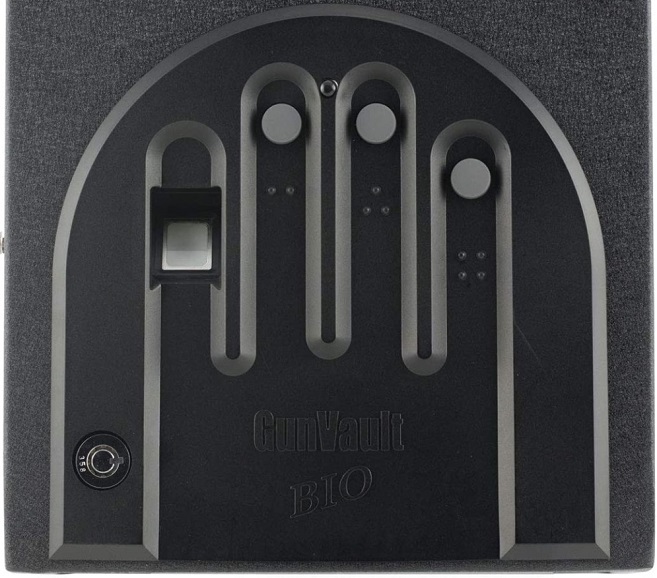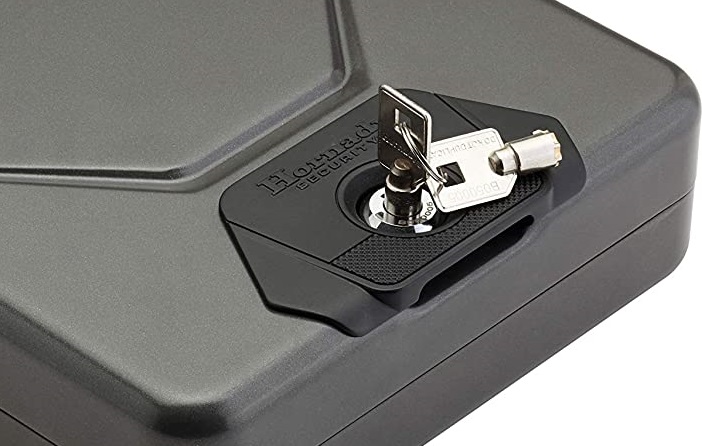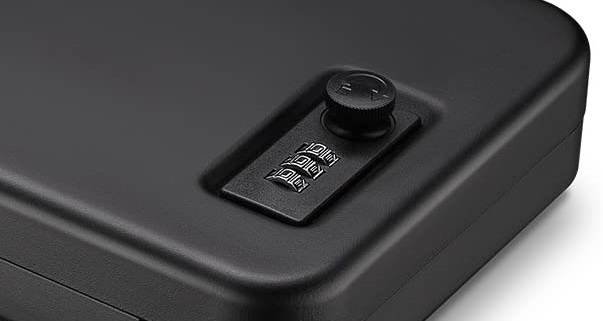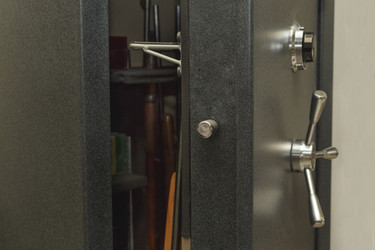The Ultimate Gun Safe Guide: Intro, Specs & Locks
Posted by 80-Lower.com on May 31st 2023
Keeping your guns safe is as important as exercising your Second Amendment right. If you're one of the millions of gun owners in America, you're probably looking for a good gun safe. But shopping for the right gun safe is difficult. There are endless brands to pick from, misleading ads, countless price points, too many features, and loads of questionable specs. Let's clear it up.
Part one: We're covering gun safe protection ratings, performance against attacks, theft and fire, physical specs like steel thickness and fire insulation, the standards used to certify safes, and gun safe locks.
Part two: We'll cover our top picks for gun safes with honest reviews. First handgun safes, then rifle safes.
Note: We partner with affiliates to provide links to products in this review. We may earn a small commission if you click a link.
Gun Safe Protection Ratings
Before buying a safe, you must understand safe protection ratings. You might buy a bad safe if you don't know the jargon. Safe protection ratings describe a unit's overall effectiveness: How well it can protect against physical attack and theft, and fire.
One organization is responsible for creating and assigning "official" gun safe protection ratings:
Underwriters Laboratories (UL)
When shopping for a safe, you'll often see the acronym, "UL". The Underwriters Laboratories (UL) is an American safety certification company. It tests building products, plastics, wires, cables, and security equipment, including locks and safes.
When shopping for any gun safe, you should try to find one that's UL-certified. UL ratings indicate how well (and for how long) your safe can protect against attacks from thieves.
UL Safe Protection Ratings Against Attack:
RSC (Class 1, Minimum)
A basic certification provided by UL, the Residential Security Container or RSC is a type of locking storage unit that provides protection against attack by common mechanical and electrical hand tools. The safe or container must withstand "rigorous prying, drilling, punching, chiseling, and tampering for five minutes." This is less impressive than it sounds. Hand tools for this test include hammers less than 3 lbs., pry bars shorter than 18", and basic residential tools like screwdrivers.
The RSC rating is considered the minimum protection rating any safe should provide. This is the most common level of protection you'll find in handgun or "nightstand" safes and portable lock boxes. It's adequate for keeping family, friends, and opportunistic burglars away from your firearms but will provide only basic resistance against a thief with tools.
TL-15 / TL-15X6 (Class 2)
The next level of UL-certified protection is a TL-15 or TL-15X6 rating. The base rating covers the door, while X6 indicates the same level of protection is provided for all six sides of the safe. This certification is given to safes capable of protecting against attacks with common mechanical and electrical hand tools for a net working time of 15 minutes. Working time is the total time spent by an attacker attempting to break the safe. A TL-15 safe can resist entry much better than an RSC-rated container: It can defeat tools a prepared thief might bring along: Grinders, carbide drills, and high-pressure cutting or crushing tools.
TL-30 / TL-30X6 (Class 3)
The TL-30 and -30X6 rating provides more protection than TL-15, both in time and tools used to attack. In addition to protecting against grinders, carbide tools and high-pressure tools for 30 working minutes, a TL-30 safe can withstand abrasive cutting wheels and power saws. The base rating also applies to the door, and X6 applies to all sides.
TRTL-30 / TRTL-30X6 (Class 3+)
The modern thief could have access to a torch or other high-heat source. So, modern safes are now rated against torch attacks. The "TR" in a TL- certification indicates this. Like tool attacks, torch attack-rated safes can either withstand 15 or 30 minutes of attack before failure. Safes are rated for doors only or all sides.
TXTL-60X6 (A Class All Its Own)
The Mack Daddy of safes in terms of raw protection. A TXTL-certified safe protects against explosive attacks, in addition to providing all the protections of the lesser ratings for no less than 60 working minutes. Yes, it resists explosives for one hour. At this level, you're working with a safe that that could function as a small bank vault or fallout shelter.
Gun Safe Steel Thickness
You'll see a lot of safes advertising a 12-gauge body or 10-ga. steel door. Gauge is a jazzy way of describing the thickness of the safe's steel, expressed in the chart below. The higher the gauge, the thicker the steel. Whether cold- or hot-rolled, thickness typically deviates +/- 0.006 to 0.009.
The chart below converts steel gauge to thickness (inches).

"How thick should my gun safe be?"
High-quality rifle safes often have layers of steel that increase their overall thickness beyond 3-gauge plating. Handgun safes usually only have a single layer of steel.
Long gun safes should have at least 10-gauge steel walls and a 10-gauge door to provide adequate protection against sustained physical attack with cutting tools. Pistol safes and ligh lockboxes use thinner gauge steel to balance protection and weight.
Gun Safe Fire Protection Ratings
Gun safe fire ratings are often questionable.
Many companies advertise fire protection ratings for their safes. But quite often, those ratings can't be trusted because they aren't certified through standardized testing of any kind. Safes with reliable fire protection are certified by Underwriters Labs. Other large safe brands, like Liberty Safes, use their own testing methods, which may also be considered reliable. Handgun safes and all those "Amazon specials" that advertise fire protection ratings should be taken with a grain of salt if they're not UL-certified.
You should trust Underwriters Labs for fire protection ratings.
All safes with a UL fire protection rating undergo standardized testing. UL tests safes by heating them for 60 minutes at temperatures that simulate a typical house fire. Each safe's ability to insulate their interior against the exterior temperature is recorded with a thermometer. UL tests safes at different temperatures and for different lengths of time:
- 30-minute safes: 1550°F
- 1-hour safes: 1700°F
- 2-hour safes: 1850°F
- 3-hour safes: 1920°F
- 4-hour safes: 2000°F
To receive the minimum UL fire rating, a safe's internal temperature can't exceed 350°F. Safes with internal temperatures that don't exceed 125°F receive the highest rating. For reference, the melting point of a polymer handgun is 420°F.
UL Safe Fire Ratings Explained
A safe with a fire rating of UL 350-1 can keep its internal temperature at 350°F for one hour when heated to 1,700°F externally. The best possible rating a safe can receive is UL 125-4. That means it can keep its internal temperature below 125°F for four hours when subjected to 2,000°F. That's an impressive but very expensive rating.
The 30-minute UL fire rating can be found in some handgun safes, but better ratings are typically found in long gun safes and heavily insulated rifle cabinets. Some safes may have fire ratings that provide 350°F of internal temperature at 1,300°F or some other lower temperature.
"How are gun safes made to be fireproof?"
A fireproof material is placed between a safe's layers of steel to insulate against open flames and heat. It's not the steel, but the layers of fireproofing that make a gun safe's door seem so thick. Multiple layers must be used to provide adequate protection against a house fire, which can reach temperatures of 1,200°F in as little as five minutes.
Critical points of a safe -- door jambs, corners, welds -- must be properly insulated, too. To effectively protect against heat, the door must use special heat-expanding seals.
Safe fireproofing materials include:
- Sheetrock and fireboard. This is an "entry-level" material that provides moderate protection. It's often found in budget, RSC-rated cabinets and long gun safes with minimum advertised fire protecting ratings.
- 2300-Degree Ceramic. Ceramic fiber provides the best protection against fire, but it is expensive and often found in mid-grade to high-end safes.
- Cement and Dry Composite. Actual cement can be used, though it's typically reserved for commercial and industrial safes, and old-school safes from decades past. Today, dry composites that are cement-like but much lighter have replaced traditional mixtures.
Types of Gun Safe Locks
Your gun safe's lock is incredibly important: It controls access to your firearms, and it's the first thing any thief will attack if they want to get inside. Gun safes use all kinds of locks: Digital locks, mechanical key or combination locks, tumblers, and punch buttons. Let's compare them all.
Combination Lock (Mechanical/Digital)

UL-listed S&G mechanical lock for a Liberty Gun Safe.
When it comes to rifle safes, the combination lock is the most popular type of lock. Mechanical combo locks use a series of geared wheels controlled by a numbered dial used to enter the combo. Around 10% of safes sold each year are fitted a mechanical dial like the one above.
The mechanical combination lock is complex and expensive to make, but it's a timeless piece of engineering that provides high security. It can't be picked like a keyed lock and it never requires batteries, so there's no need to disassemble the lock or temporarily disable your safe.

An S&G Electronic Combination Lock
Electronic combo locks are simpler and more affordable than mechanical combo locks. In some cases, digital locks may be more difficult to break than a mechanical lock. Digital locks provide the user with a button keypad. Once the correct digits are entered, a wire carries a signal from the keypad to motors that control the deadbolts inside the safe's door.
"Which combo lock is better? Mechanical or digital?"
Even though electronic locks vastly outsell mechanical locks, it's important to compare the two. Every person's needs are different, and one lock might provide that distinct advantage you want or need.
Security
Since most safes sold today are electronic, the first question most ask is, "How reliable is an electronic lock?" The answer is: It depends. If the lock is rated to UL's standards, then it will provide high security. UL Standard 768 is Department of Defense- and ANSI-approved. Any 768-rated electronic combo lock will repel attacks as well as a mechanical combo lock. The keypad is not directly connected to the deadbolt that locks the handle, so destroying the keypad doesn't won't provide access to the safe.
Winner: Tie
Accessibility
Which lock provides the easiest access? The electronic lock. The combination can be entered in a few seconds. Even the smoothest and simplest mechanical lock will take longer to access. Pressing a series of keys requires basic motor skills in an emergency, but entering the combination on a dial requires fine motor skills. The electronic lock is less likely to get you stuck if seconds count and your hands are shaking.
Winner: Electronic
Reliability
Electronic keypads require batteries to be changed every 3 month to 1 year. Most are expected to operate for 3 to 10 years. This is poor performance compared to a mechanical dial, which requires no power and can run its gears and pins reliably for well over a century with daily use. If you're interested in a lock that can withstand the tests of time, mechanical is the way to go.
Winner: Mechanical
Ease of Combination Change
This is something many don't think about: You might want or need to change the combination on your safe. Mechanical safes often require a locksmith to change the combination, since physically changing the wheel pack is almost always required. Electronic locks can be reprogrammed with a few button presses, eliminating the need for this costly and time-consuming service.
Winner: Electronic
Extra Features
Everyone likes more bang for the buck. The electronic lock is obviously the winner, but you probably knew that. Most electronic locks allow for multiple combinations. Some provide access logs. Others offer Bluetooth connectivity for constant monitoring, with silent alarms that'll notify you of an attempted entry. Mechanical locks don't come with any of these features.
winner: Electronic
Quirks
Mechanical locks suffer few to no quirks. If you can turn the dial in the correct direction and hit each number, nothing will fail you. Electronic locks can suffer from quirks. You could punch in the wrong number and lock yourself out for five minutes. Low battery? No battery? Locked out. Change the code and forget it? Locked out.
Winner: Mechanical
Simplex Lock

The Desk Mate Handgun Safe from V-Line uses a Simplex lock.
Mechanical and digital combos each have their unique advantages. You'll be happy to know there is a combination, pun intended, of the two locks available for most types of gun safes. The Simplex lock is found on thousands of bank and casino doors and industrial complexes. It uses a punch pad with five buttons which, when pressed in a certain pattern, create the combination required for entry. Each button on the Simplex lock is a binary command, 0 or 1. The five-digit combination can be anything the user sets: 01010, 00011, 10010.
Simplex Lock Pros
The Simplex offers the advantages of a digital and mechanical combination without the disadvantages of either. It provides quicker access to the safe than even a digital lock. No batteries are required, so there aren't any electronics to fidget with. The combo can be entered instantaneously to provide emergency access. It can also be easily changed by the user, no locksmith is needed. It'll last for decades, it's stupid easy to use, and it doesn't require a steady hand to open.
Simplex Lock Cons
There are few cons with the Simplex lock other than its relative weakness compared to high-end digital and mechanical combos. The buttons on the Simplex are easier to attack and destroy than the dial on a mechanical combo, and unlike the remote connection of a digital combo, the Simplex mechanism must be directly connected to the handle to control access. With that said, a well-rated Simplex lock with UL certifications will defeat a thief just as well as any other type of gun safe lock with the same UL rating.
Biometric Fingerprint Lock

The Gunvault Minivault Pistol Safe uses a biometric lock.
Biometric fingerlock locks are found on entry-level long gun safes and portable pistol safes, with higher-end safes providing the biometric as an alternative or backup to a combination lock. Set up the lock by letting it read and store your fingerprints. When you want access, press your fingers down on the pad. A laser reads the unique signature of your fingertips to provide access.
Biometric Lock Pros
It doesn't get much easier than the biometric lock when it comes to safe access. Biometric locks read your prints faster than you can key in the numbers on a combo lock. They're perfect for nightstand safes and pistol lockboxes. These locks often come with extra features. Most can store at least 5 different sets of prints. Some can store 100 or more. Overkill, yes.
Often, you'll be provided Bluetooth connectivity and some sort of smartphone app to monitor your biometric lock's status, battery life, alarm system, log of prints and use. Like a digital combo lock, biometric locks are connected via a wire to the deadbolt or locking mechanism on the safe's door or lid. Destroying the biometric scanner doesn't provide access.
Biometric Lock Cons
Biometric locks are rarely UL-listed and suffer most of the digital lock's problems: They require batteries or a power source. They aren't as durable as other locks and can be broken easily. Low-end and budget scanners suffer frequent problems, like failing to scan prints and denying access. It's a good idea to check reviews on these scanners before purchasing any biometric gun safe.
Key Lock

The key lock uses the classic key and tumbler to provide access. These are almost exclusively found on small pistol lockboxes, like the Hornady box shown above. Key locks are also used on entry-level gun cabinets. Gun safes with digital combo locks sometimes have backup key locks.
Key Lock Pros
Key locks are the most compact and lightweight. Many are TSA-approved, too. They're great for travel safes for this reason. Key locks are typically reliable. They're mechanical and don't need batteries. No programming, and no smartphone app to mess with. They're usually very affordable, too.
Key Lock Cons
Key locks are relatively weak compared to other locks and don't provide much protection against an attacker with tools. If you lose the key, you're out of luck unless you pay a locksmith who can crack it. There's no guarantee the lock can be saved if you lose the key, making your safe a paperweight. Those keys can get stolen, too. Key locks take time to open compared to any digital lock. Only the mechanical dial is slower. It's best to stick with a key lock if you need a highly portable or compact safe and you don't like electronics, or you're traveling by plane.
"Briefcase" / Tumbler Combo Lock

It's an age-old lock, but it's still in use today. The "briefcase" wheel-driven tumbler lock is found on small pistol safes and travel lockboxes. Most use three to four wheels that unlock a rotating knob which controls a small lever or deadbolt inside the safe lid or door.
Tumbler Lock Pros
The tumbler combo lock provides the same benefits of a key lock, without the risk of losing the key. These tumbler locks are compact and take up less space than just about any other locking mechanism, so they're perfect for the pistol owner who needs an ultralight, small locking container for frequent travel. Like key locks, units equipped with tumbler locks are among the most affordable in the pistol safe category.
Tumbler Lock Cons
Beyond portability and the lack of a key to lose, the wheel combo lock provides no advantage over other locks. These locks can be easily defeated, and destroying them usually provides access to the safe's contents. The combination cannot be changed and they afford little security otherwise. These are best for backpackers and on-foot shooters who want to merely keep prying eyes away and children from making an opportunistic entry.
Gun Safe Intro Guide: Recap & Part 2
This section was a wall of text, we know. Nonetheless, it's critically important you have a solid reference for the endless specs and advertised "features" gun safes claim to come with. Here's the important stuff from earlier.
- The Underwriters Laboratory (UL) certifies top gun safes' protection ratings.
- An "RSC" rating indicates the UL's minimum certified gun safe protection.
- To receive the minimum UL fire rating, a safe's internal temperature can't exceed 350°F.
- Safes with internal temperatures that don't exceed 125°F receive the highest rating.
- For reference, the melting point a GLOCK's polymer frame is 420°F.
- To receive the minimum UL fire rating, a safe's internal temperature can't exceed 350°F.
- Safes with internal temperatures that don't exceed 125°F receive the highest rating.
- About 90% of long gun safes are fitted with digital combination locks today.
- Biometric fingerprint locks are the most popular access method for pistol lockboxes.
Now you've got a good warm n' fuzzy about all the things that go into a quality firearm safe. Next up, it's time to look at some of the best safes available for different categories. Part 2 covers best pistol safes.
DISCLAIMER: If you are new to the world of DIY gun building, you likely have a lot of questions and rightfully so. It’s an area that has a lot of questions that, without the correct answers, could have some serious implications. At GunBuilders.com, we are by no means providing this content on our website to serve as legal advice or legal counsel. We encourage each and every builder to perform their own research around their respective State laws as well as educating themselves on the Federal laws. When performing your own research, please be sure that you are getting your information from a reliable source.

